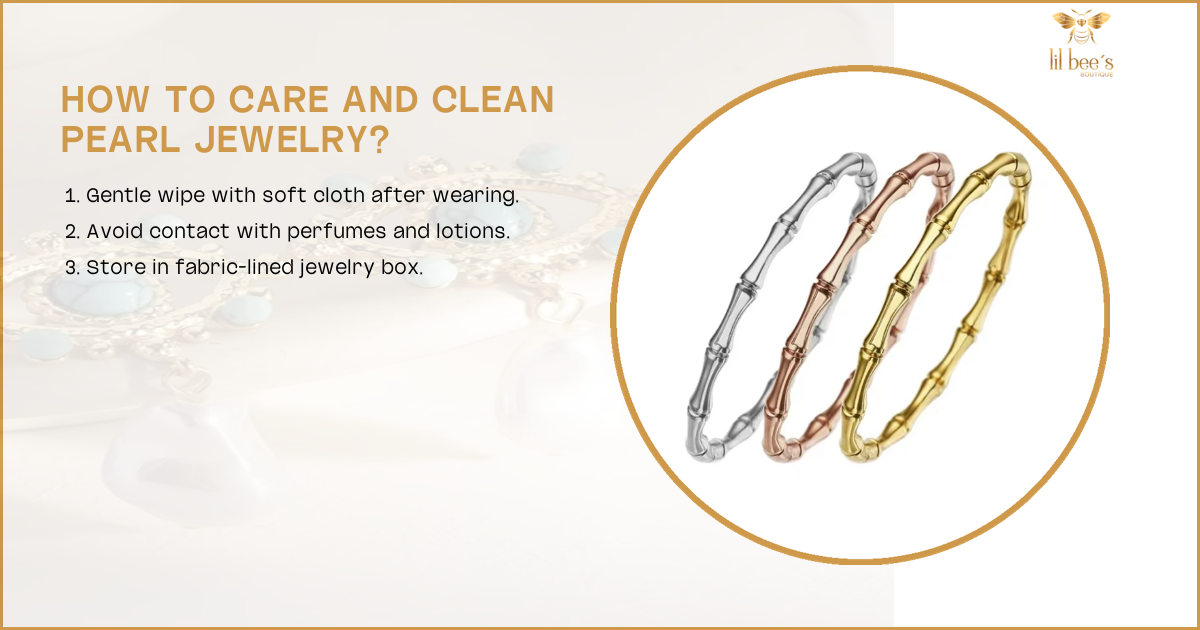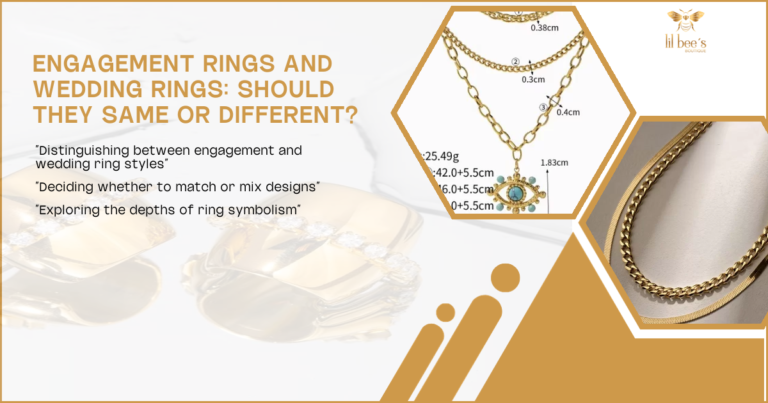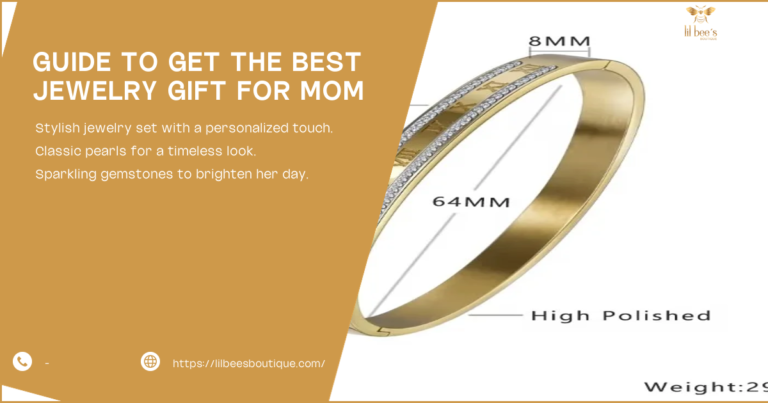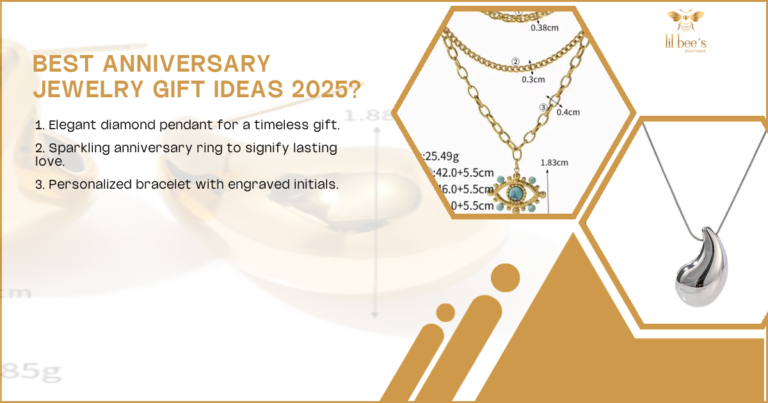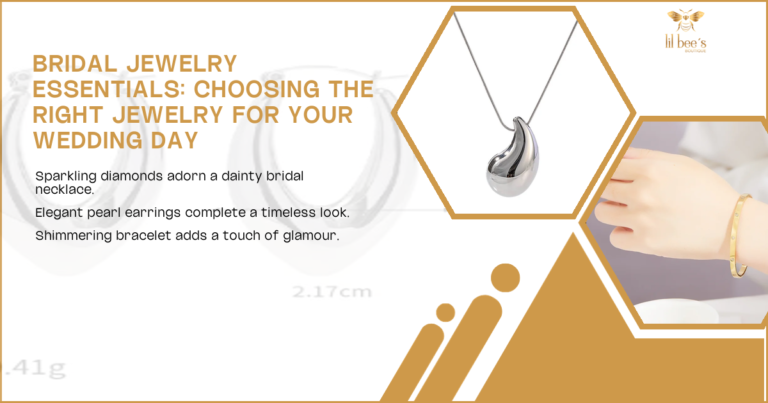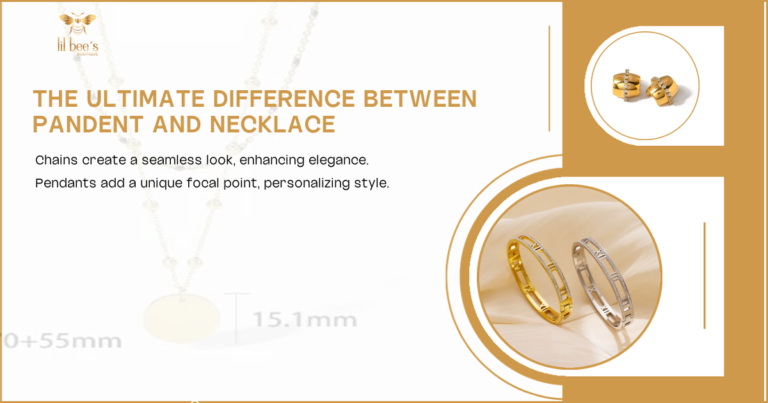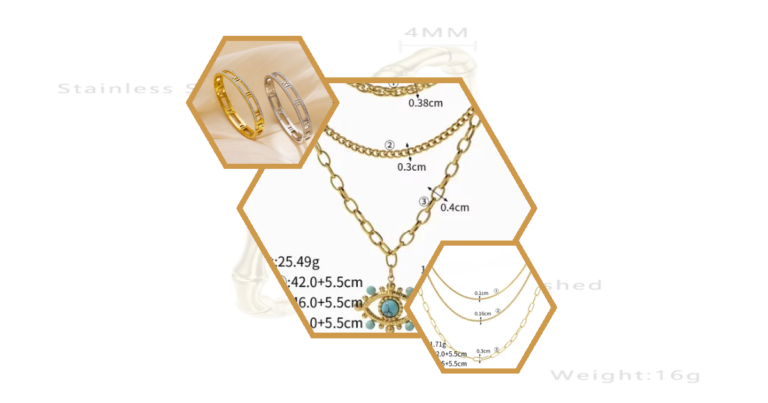Pearl jewelry is a timeless classic, cherished for its elegance and beauty. However, pearls are delicate and require special care to maintain their luster and longevity. This comprehensive guide will walk you through the essential steps to care for and clean pearl jewelry, ensuring your precious pieces remain stunning for generations.
Essential Pearl Jewelry Maintenance
Daily Pearl Care Tips
Caring for your pearl jewelry daily is crucial to preserving its natural beauty. Pearls are organic gems, sensitive to chemicals and environmental factors. To keep them looking their best, always put on your pearls after applying makeup, perfume, and hairspray. These substances can damage the pearl’s surface, dulling their shine over time.
Additionally, wipe your pearls with a soft, damp cloth after each wear. This simple step removes any oils or residues that may have accumulated, helping to maintain their luster. Remember, pearls are softer than other gemstones, so handle them with care to avoid scratches.
- Put on pearls after makeup and perfume
- Wipe with a soft, damp cloth after wearing
- Handle gently to prevent scratches
Long-Term Pearl Preservation Techniques
For long-term preservation, it’s essential to store your pearls properly. Pearls need moisture to retain their sheen, so avoid storing them in airtight containers. Instead, keep them in a soft pouch or a lined jewelry box to protect them from scratches and environmental damage.
Regularly inspect your pearl jewelry for signs of wear, such as fraying strings or loose settings. Addressing these issues promptly can prevent further damage and extend the life of your pearls. Consider restringing pearl necklaces every few years to ensure their durability.
- Store in a soft pouch or lined box
- Avoid airtight containers
- Inspect regularly for wear and tear
How to Clean Pearl Jewelry Safely
Gentle Cleaning Methods for Pearls
Cleaning pearls requires a gentle touch. Avoid harsh chemicals and abrasive materials that can damage their delicate surface. Instead, use a mild soap solution and a soft cloth to clean your pearls. Gently wipe each pearl, taking care not to soak them, as excessive moisture can weaken the silk thread.
After cleaning, lay your pearls flat on a soft towel to dry. This prevents the thread from stretching and ensures your pearls maintain their shape. Regular cleaning will keep your pearls looking radiant and beautiful.
- Use mild soap and soft cloth
- Avoid soaking pearls
- Lay flat to dry
Cleaning Pearl Necklaces and Strands
Pearl necklaces and strands require special attention during cleaning. The silk thread that holds the pearls together is susceptible to damage from water and chemicals. To clean, dip a soft cloth in a mild soap solution and gently wipe each pearl. Avoid getting the thread wet to prevent weakening.
Once cleaned, allow the necklace to dry completely before wearing or storing. This ensures the thread remains strong and the pearls retain their luster. Regular cleaning and careful handling will keep your pearl necklaces looking exquisite.
- Use a soft cloth with mild soap
- Avoid wetting the thread
- Allow to dry completely
Caring for Pearl Rings and Earrings
Pearl rings and earrings are often exposed to more wear and tear than other jewelry pieces. To clean them, use a soft cloth dampened with a mild soap solution. Gently wipe the pearls, taking care not to damage the settings or metal components.
For pearl rings, avoid wearing them during activities that may expose them to chemicals or rough surfaces. This will help prevent scratches and maintain their beauty. Regular cleaning and mindful wear will ensure your pearl rings and earrings remain stunning.
- Use a soft cloth with mild soap
- Avoid exposure to chemicals
- Clean regularly for lasting beauty
Pearl Jewelry Cleaning Tools and Materials
Safe Cleaning Solutions for Pearls
When cleaning pearls, it’s essential to use safe solutions that won’t harm their delicate surface. A mild soap mixed with lukewarm water is ideal for cleaning pearls. Avoid using ammonia, vinegar, or any acidic substances, as these can damage the pearls.
For a more natural approach, consider using a gentle baby shampoo diluted in water. This provides a safe and effective cleaning solution that won’t harm your pearls. Always test any cleaning solution on a small area before applying it to the entire piece.
- Use mild soap or baby shampoo
- Avoid ammonia and acidic substances
- Test solutions on a small area first
Soft Cloths and Brushes for Pearl Care
The right tools are crucial for cleaning pearl jewelry. Use a soft, lint-free cloth to wipe your pearls, as rough materials can scratch their surface. For more intricate pieces, a soft-bristled brush can help clean hard-to-reach areas without damaging the pearls.
Avoid using toothbrushes or any stiff-bristled brushes, as these can cause scratches. Always handle your pearls with care, using gentle motions to clean and maintain their beauty.
- Use soft, lint-free cloths
- Soft-bristled brushes for intricate pieces
- Avoid stiff-bristled brushes
Proper Storage of Pearl Jewelry
Ideal Storage Conditions for Pearls
Proper storage is essential to maintaining the beauty and longevity of your pearl jewelry. Pearls need a certain level of humidity to prevent drying out, so avoid storing them in airtight containers. Instead, keep them in a soft pouch or a lined jewelry box to protect them from scratches and environmental damage.
Ensure your storage area is cool and away from direct sunlight, as excessive heat and light can cause pearls to fade. By providing the right storage conditions, you can preserve the natural beauty of your pearls for years to come.
- Store in a soft pouch or lined box
- Avoid airtight containers
- Keep away from heat and sunlight
Protecting Pearls from Environmental Factors
Environmental factors can significantly impact the condition of your pearls. To protect them, avoid exposing your pearls to extreme temperatures, humidity, and direct sunlight. These conditions can cause pearls to crack, fade, or lose their luster.
When not wearing your pearls, store them in a cool, dry place. This helps maintain their natural moisture and prevents damage from environmental factors. By taking these precautions, you can ensure your pearls remain beautiful and vibrant.
- Avoid extreme temperatures and humidity
- Store in a cool, dry place
- Protect from direct sunlight
Professional Pearl Jewelry Cleaning and Maintenance
When to Seek Professional Cleaning Services
While regular at-home cleaning is essential, there are times when professional cleaning services are necessary. If your pearls have become heavily soiled or damaged, a professional jeweler can provide a thorough cleaning and restoration.
Professional services are also recommended for restringing pearl necklaces, as this requires specialized skills to ensure the pearls are securely and evenly spaced. By seeking professional help when needed, you can maintain the integrity and beauty of your pearl jewelry.
- Seek professional help for heavy soiling
- Professional restringing for necklaces
- Maintain integrity and beauty
Restringing Pearl Necklaces
Restringing is an important aspect of pearl necklace maintenance. Over time, the silk thread holding the pearls can weaken, leading to potential breakage. Regular restringing ensures the necklace remains secure and the pearls are evenly spaced.
A professional jeweler can restring your necklace, using high-quality silk thread and knots between each pearl for added security. This not only enhances the necklace’s durability but also maintains its aesthetic appeal.
- Regular restringing for durability
- Use high-quality silk thread
- Knots between pearls for security
Common Pearl Jewelry Care Mistakes to Avoid
Harsh Chemicals and Cleaning Agents
One of the most common mistakes in pearl care is using harsh chemicals and cleaning agents. Substances like ammonia, bleach, and vinegar can damage the pearl’s surface, leading to dullness and discoloration. Always opt for mild, pearl-safe cleaning solutions to preserve their beauty.
Additionally, avoid using ultrasonic cleaners, as the vibrations can cause pearls to crack or become loose in their settings. By steering clear of harsh chemicals and cleaning methods, you can protect your pearls from unnecessary damage.
- Avoid ammonia, bleach, and vinegar
- Use mild, pearl-safe solutions
- Do not use ultrasonic cleaners
Improper Storage Practices
Improper storage is another common mistake that can damage pearl jewelry. Storing pearls in airtight containers or exposing them to direct sunlight can cause them to dry out and lose their luster. Always store pearls in a soft pouch or lined jewelry box to protect them from environmental damage.
Ensure your storage area is cool and away from direct sunlight, as excessive heat and light can cause pearls to fade. By avoiding improper storage practices, you can maintain the natural beauty of your pearls.
- Avoid airtight containers
- Store in a soft pouch or lined box
- Keep away from heat and sunlight
Caring for Different Types of Pearl Jewelry
Freshwater Pearl Care
Freshwater pearls are known for their unique shapes and colors, making them a popular choice for jewelry. To care for freshwater pearls, follow the same cleaning and storage guidelines as other pearls. Use a mild soap solution and a soft cloth for cleaning, and store them in a cool, dry place.
Regularly inspect freshwater pearls for signs of wear, such as scratches or discoloration. Addressing these issues promptly can prevent further damage and extend the life of your pearls.
- Use mild soap and soft cloth
- Store in a cool, dry place
- Inspect regularly for wear
Saltwater Pearl Maintenance
Saltwater pearls, including Akoya, Tahitian, and South Sea pearls, are prized for their luster and size. To maintain their beauty, clean them gently with a mild soap solution and a soft cloth. Avoid exposing saltwater pearls to harsh chemicals or extreme temperatures.
Proper storage is also crucial for saltwater pearls. Keep them in a soft pouch or lined jewelry box, away from direct sunlight and humidity. By following these guidelines, you can preserve the elegance of your saltwater pearls.
- Clean with mild soap and soft cloth
- Avoid harsh chemicals and temperatures
- Store in a soft pouch or lined box
Cultured vs. Natural Pearl Care
Cultured and natural pearls require similar care, but there are some differences to consider. Cultured pearls are more common and often more affordable, but they still require gentle cleaning and proper storage to maintain their beauty.
Natural pearls, being rarer and more valuable, may require more specialized care. Regular inspections and professional cleaning services can help preserve their unique characteristics. By understanding the differences between cultured and natural pearls, you can provide the best care for each type. Timeless jewelry appeal never goes out of style
- Gentle cleaning and proper storage
- Regular inspections for natural pearls
- Professional cleaning for valuable pieces
Sustainable Pearl Jewelry Care Practices
Eco-Friendly Cleaning Solutions
Sustainable pearl care involves using eco-friendly cleaning solutions that are safe for both the environment and your pearls. Consider using natural, biodegradable soaps or gentle baby shampoos for cleaning. These options provide effective cleaning without harming the environment.
Ethical Pearl Sourcing and Maintenance
Ethical sourcing and maintenance of pearls are essential for sustainable jewelry practices. Choose pearls from reputable sources that prioritize environmental conservation and fair labor practices. By supporting ethical pearl sourcing, you contribute to the sustainability of the pearl industry.
FAQs
Can you get pearl jewelry wet?
Pearl jewelry should not be submerged in water. While a damp cloth can be used for cleaning, excessive moisture can weaken the silk thread and damage the pearls. Always dry your pearls thoroughly after cleaning to maintain their integrity.
How to clean pearls that have yellowed?
Yellowing in pearls can occur over time due to exposure to chemicals or improper storage. To clean yellowed pearls, use a mild soap solution and a soft cloth. Gently wipe each pearl, and consider professional cleaning services for more severe discoloration.
Is it safe to use ultrasonic cleaners on pearl jewelry?
Ultrasonic cleaners are not safe for pearl jewelry. The vibrations can cause pearls to crack or become loose in their settings. Always opt for gentle cleaning methods to protect your pearls from damage.
How often should you clean pearl jewelry?
Pearl jewelry should be cleaned after each wear to remove oils and residues. Regular cleaning helps maintain their luster and prevents damage. For heavily soiled pearls, consider professional cleaning services.
Can you wear pearl jewelry every day?
While pearls can be worn daily, it’s essential to handle them with care. Avoid exposing them to chemicals, extreme temperatures, and rough surfaces. Regular cleaning and proper storage will help maintain their beauty.
How do you clean the non-pearl parts of your pearl jewelry?
To clean the non-pearl parts of your jewelry, use a soft cloth dampened with a mild soap solution. Gently wipe the metal or other components, taking care not to damage the pearls. Regular cleaning will keep your entire piece looking its best.g/)

